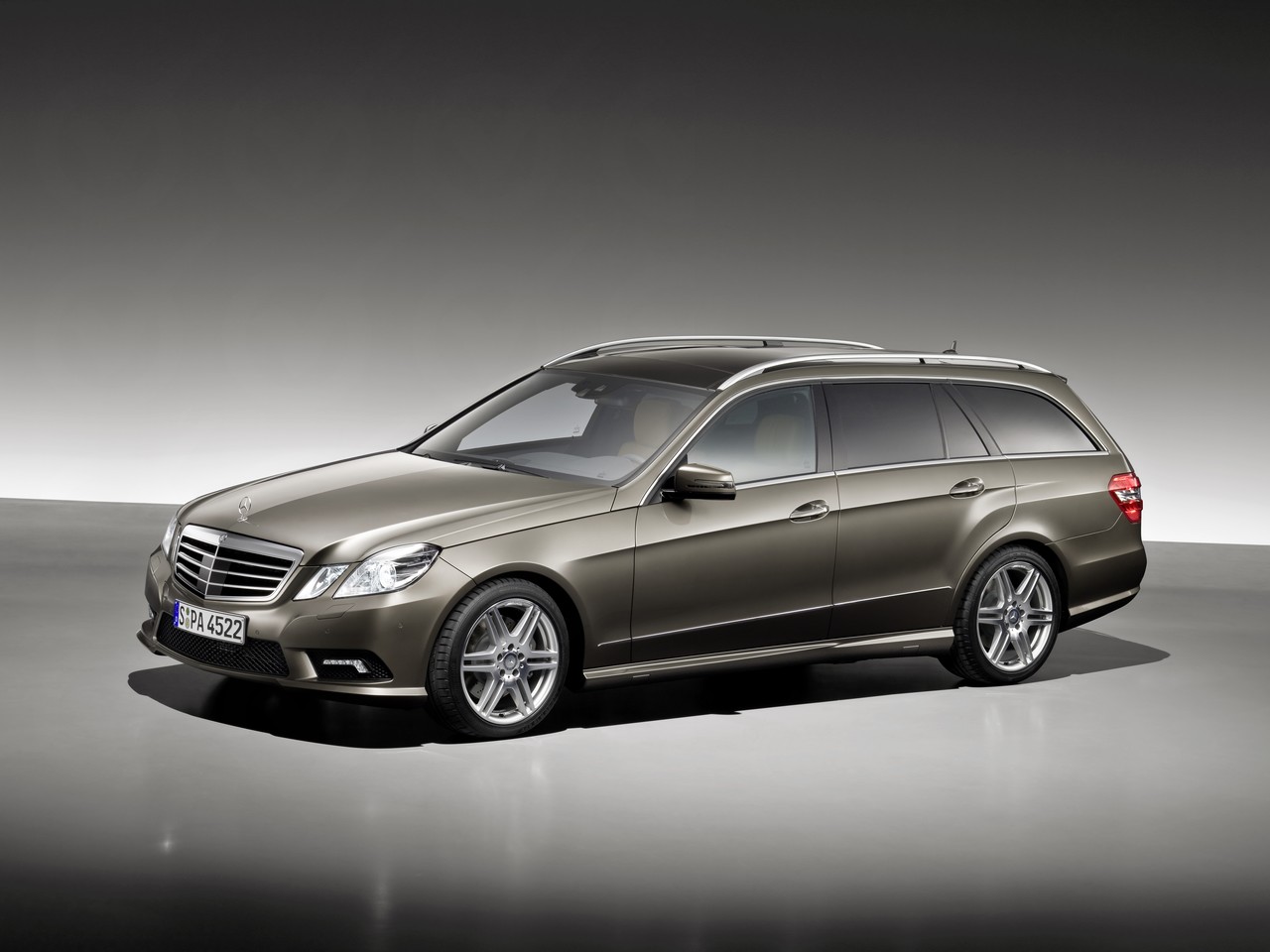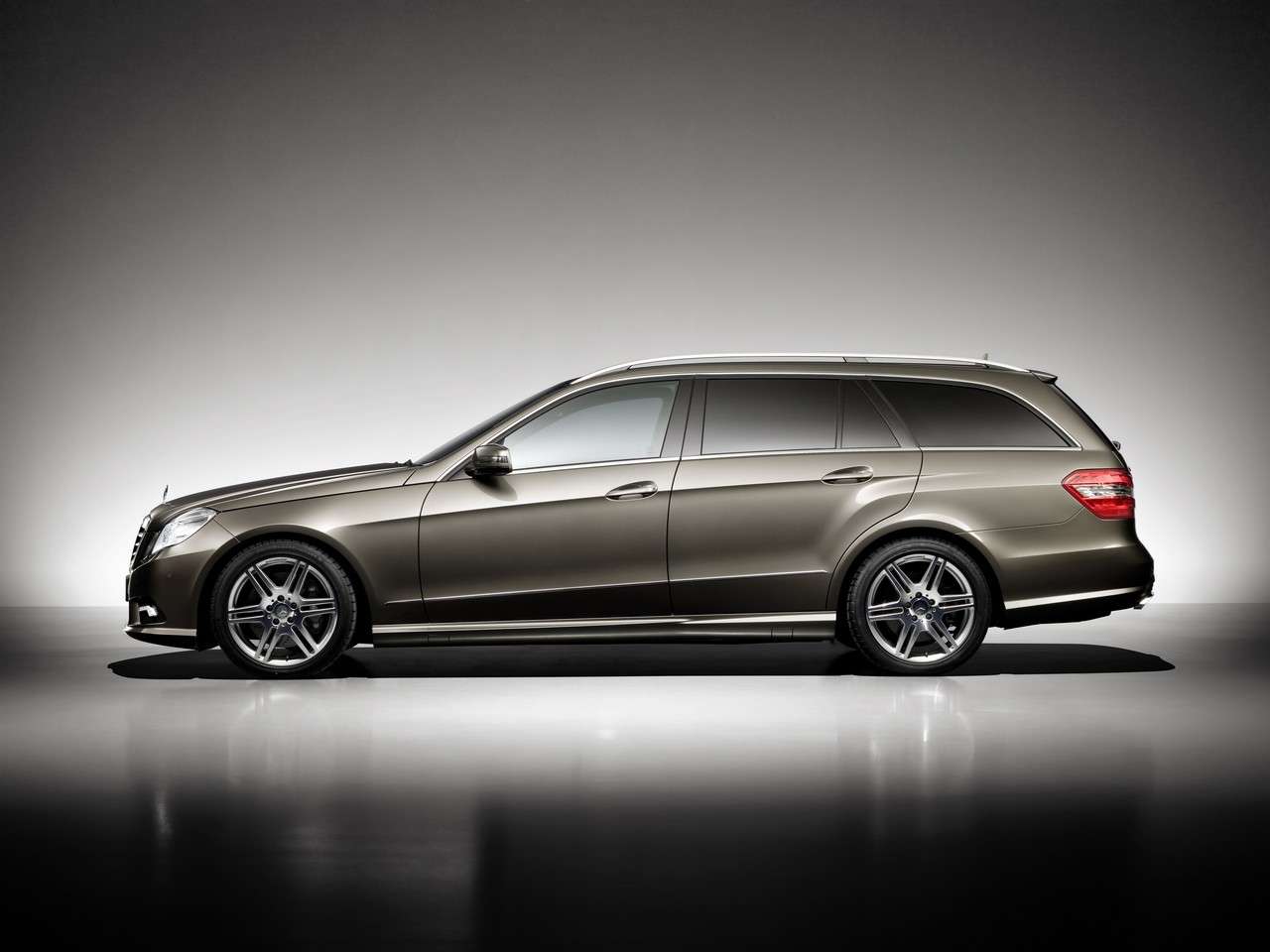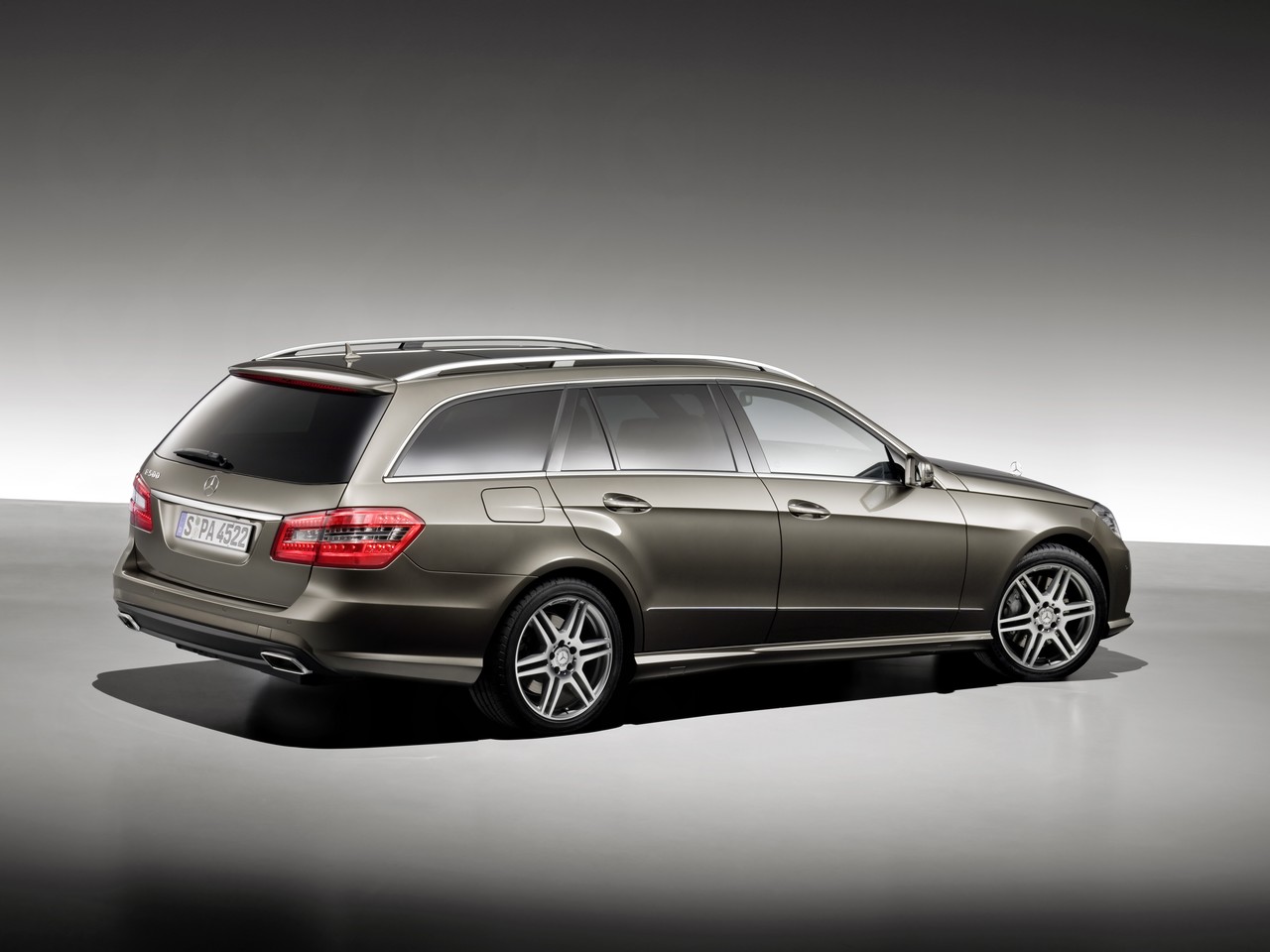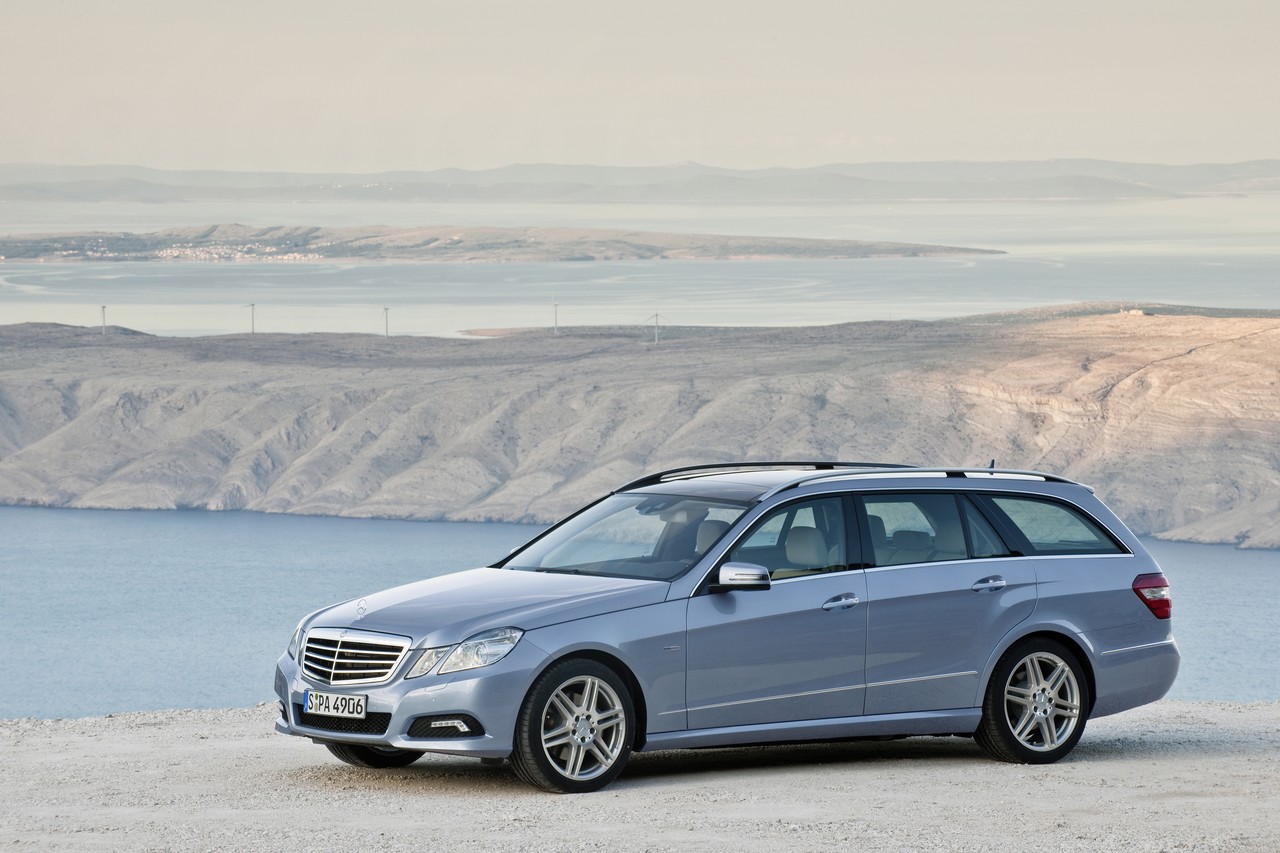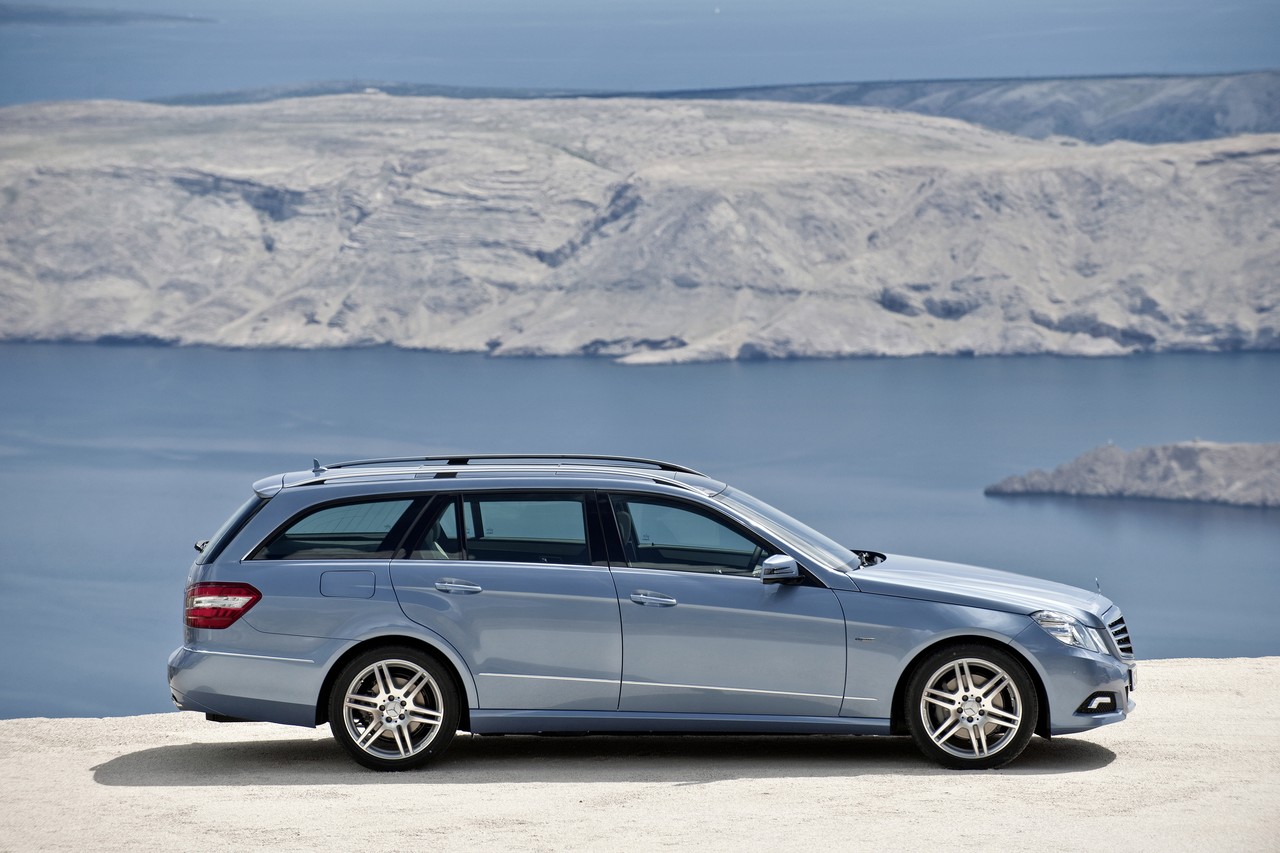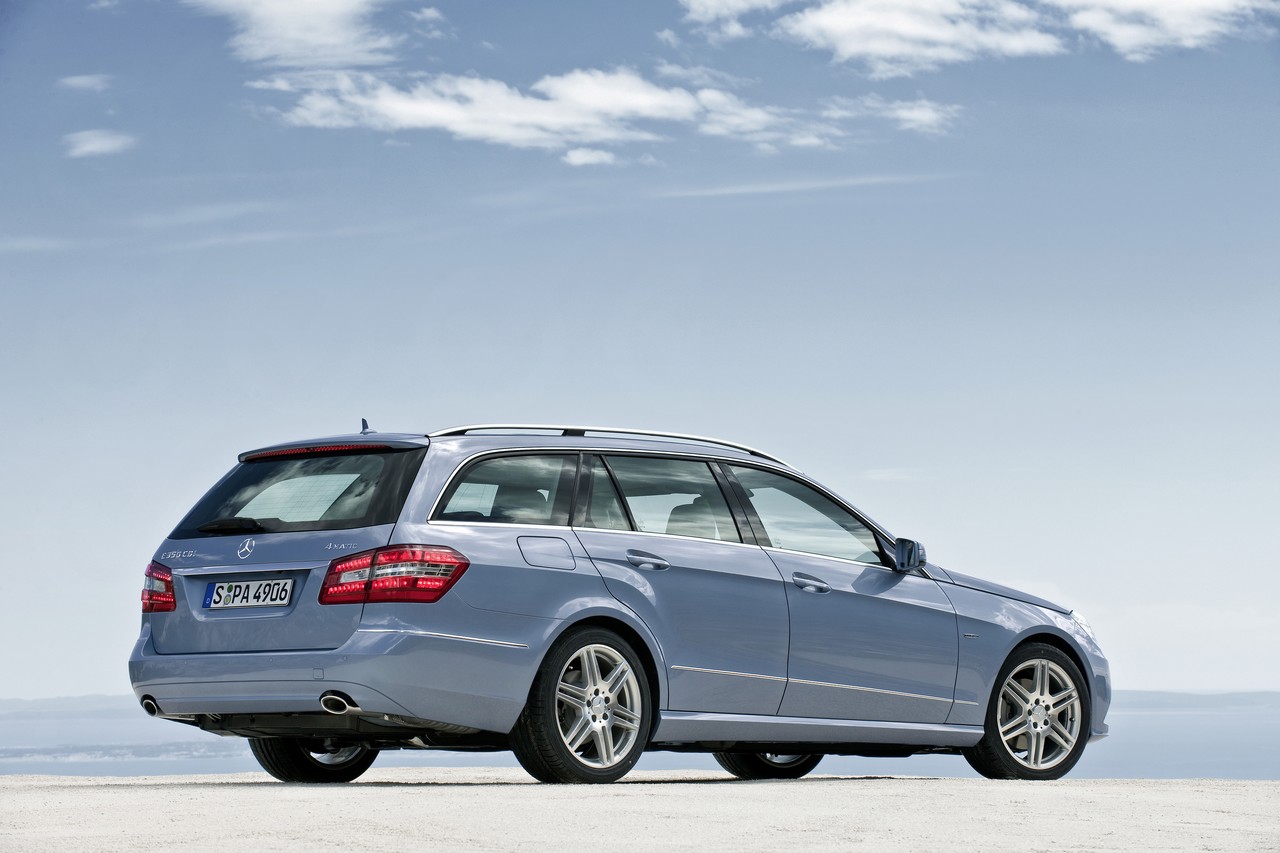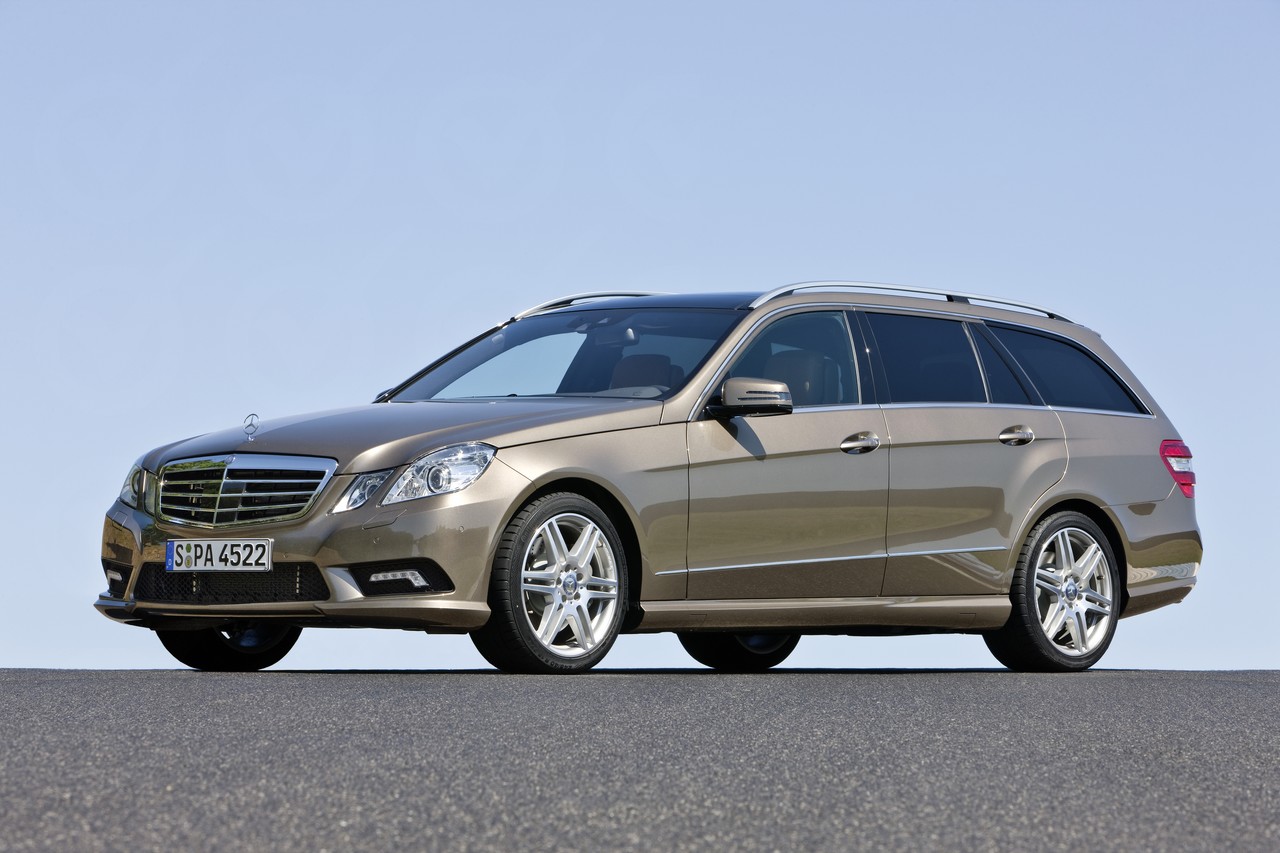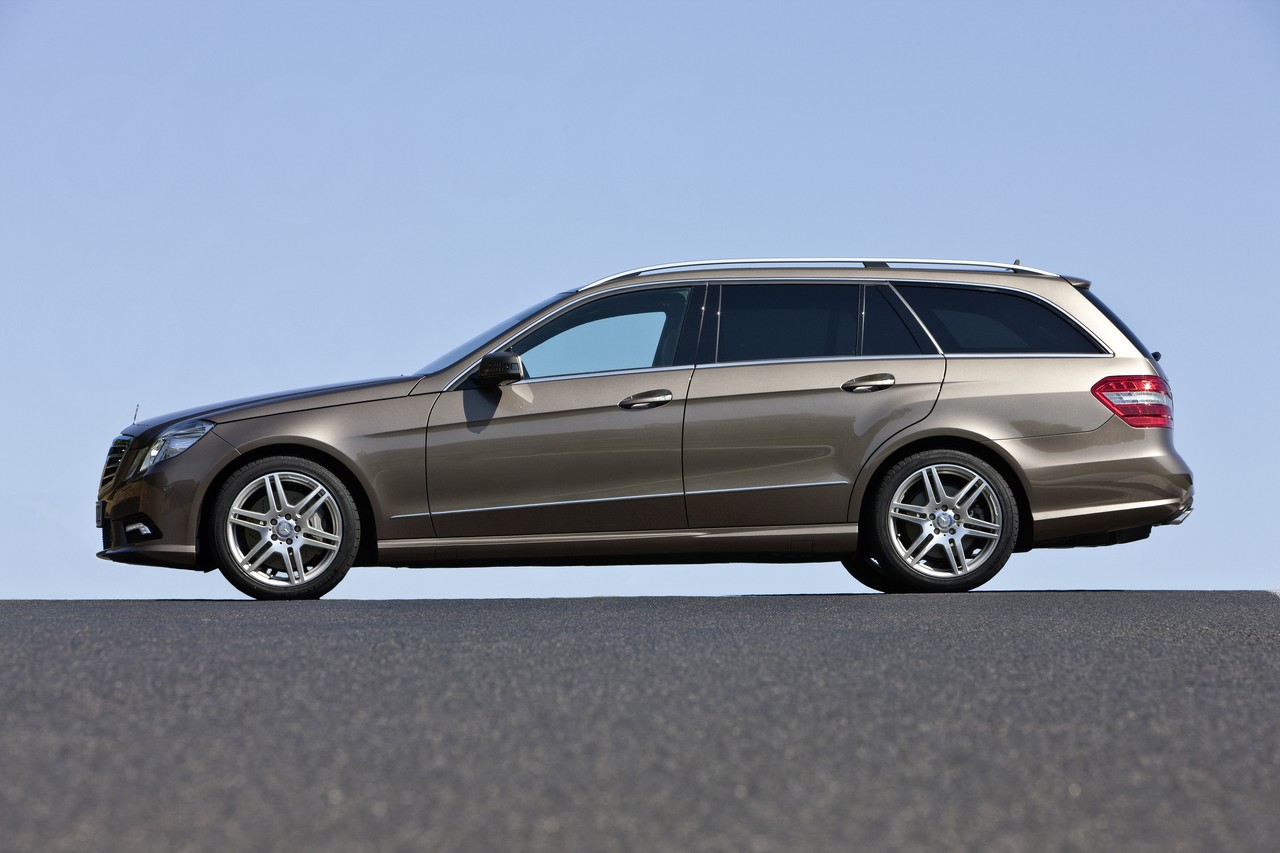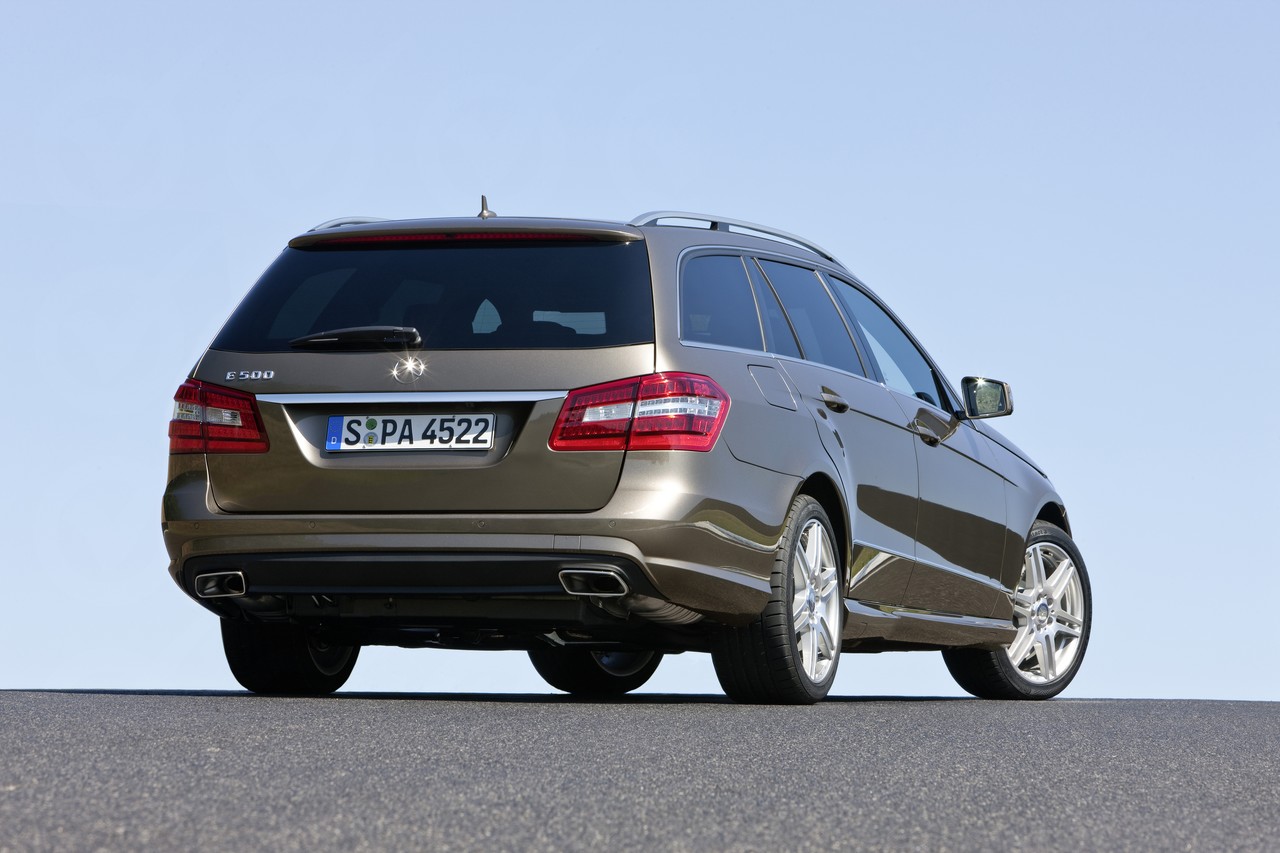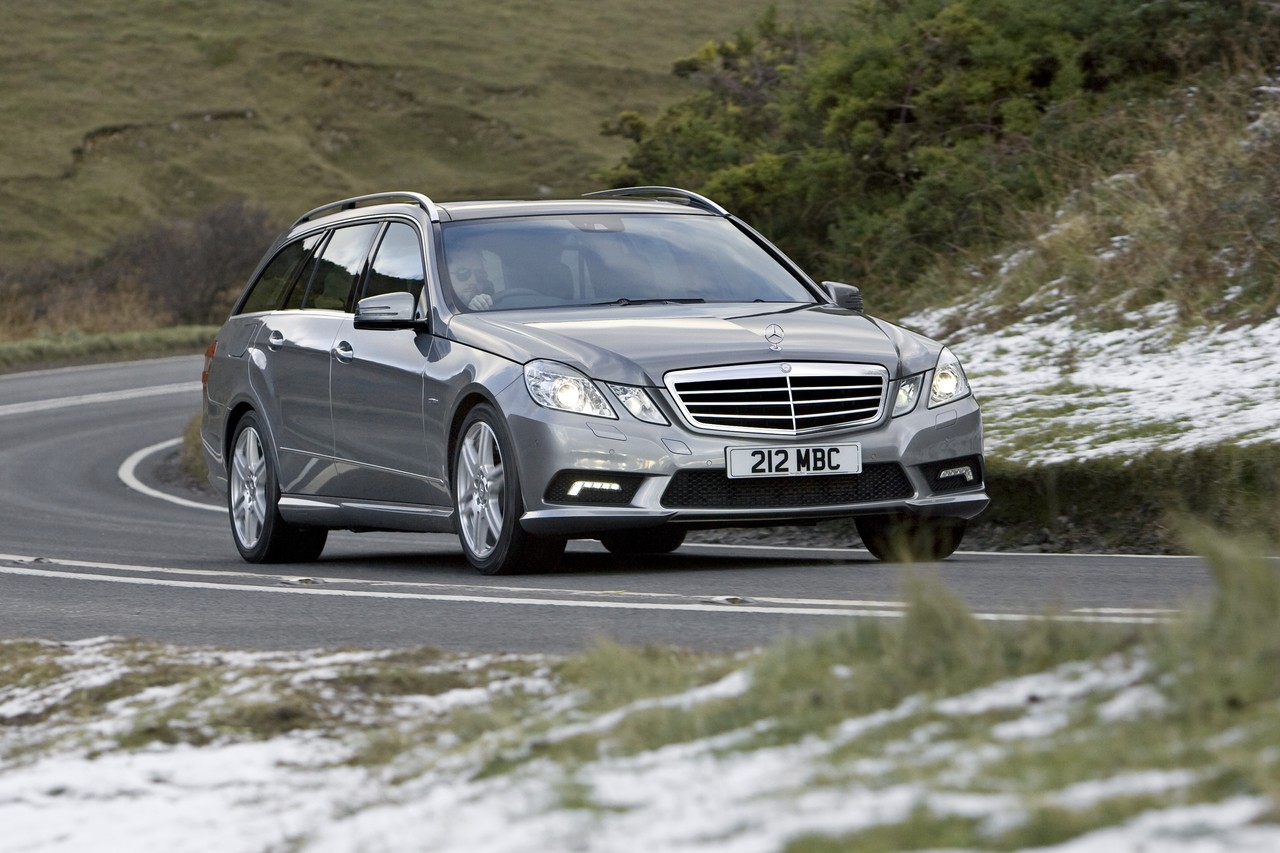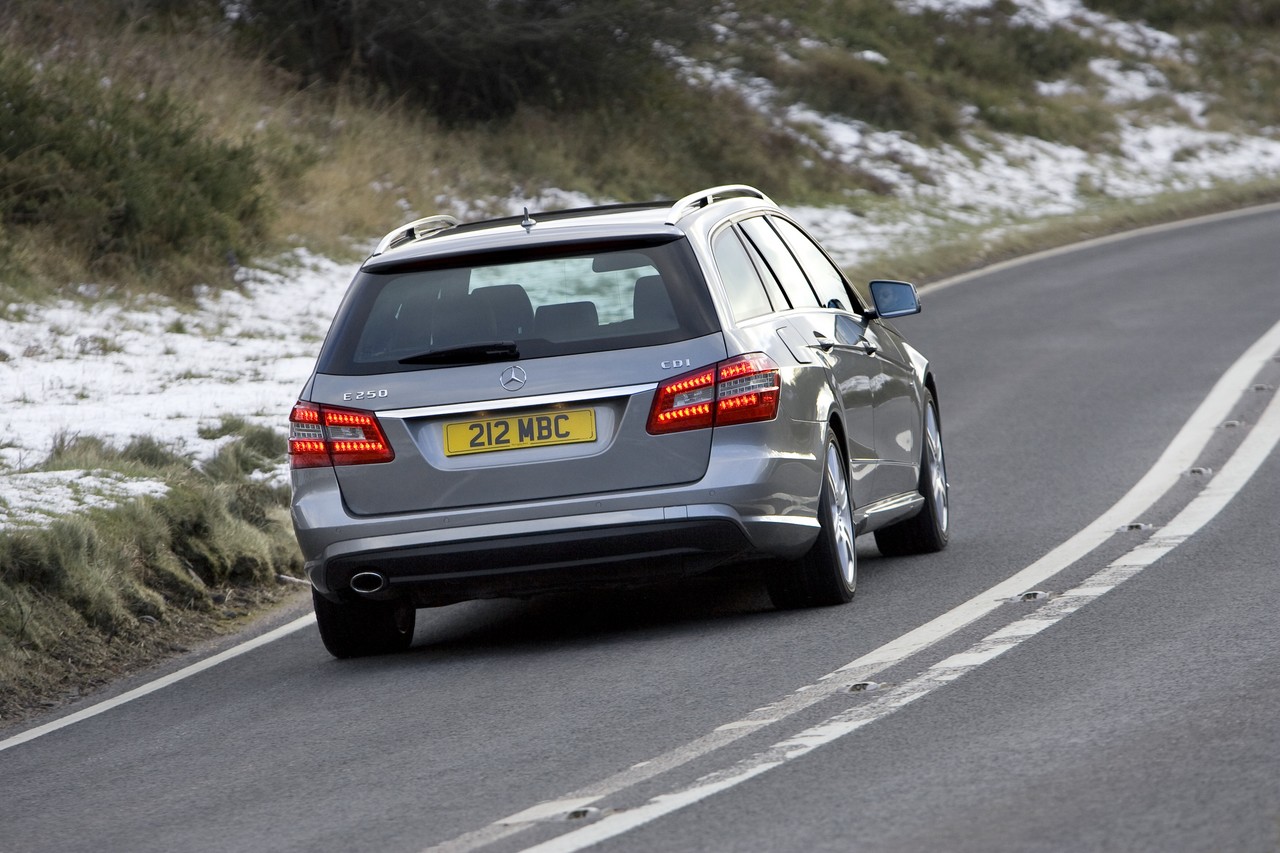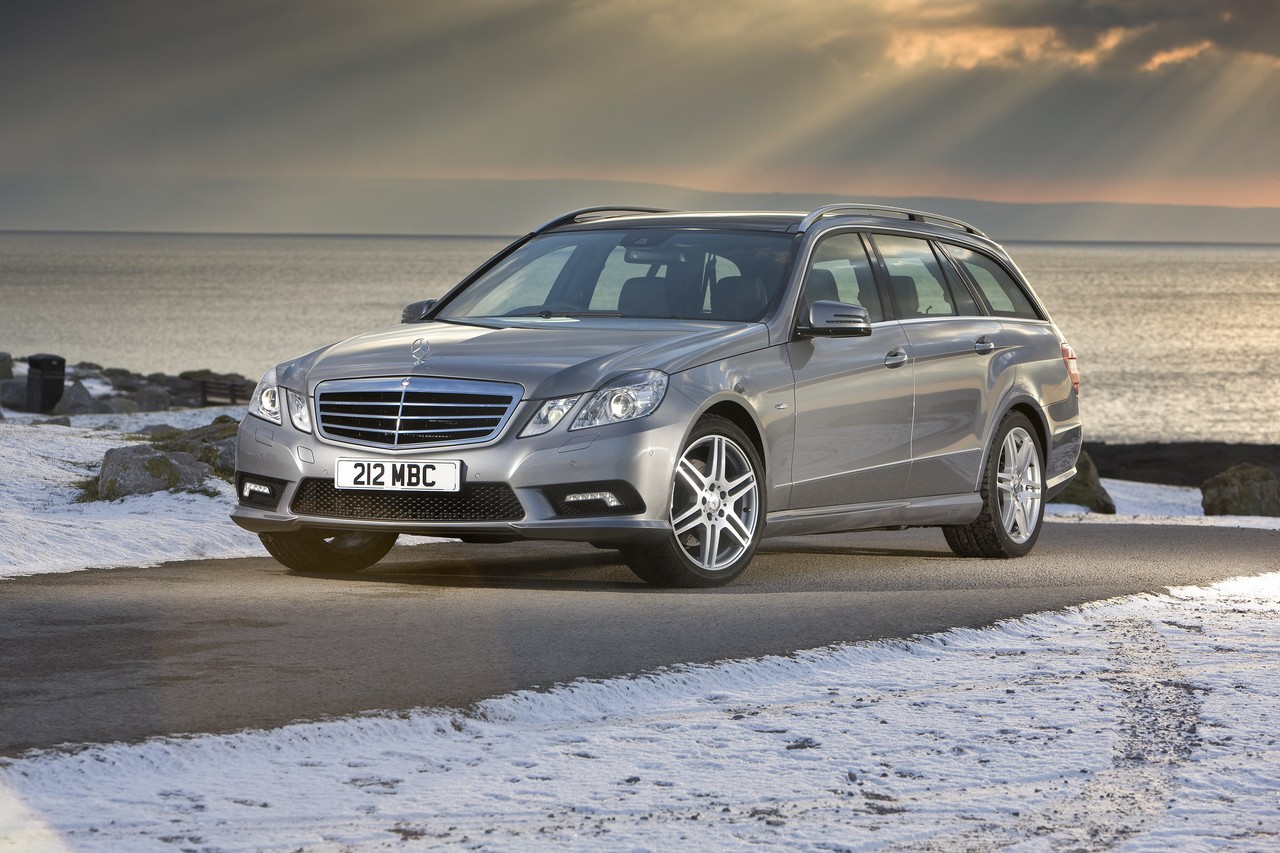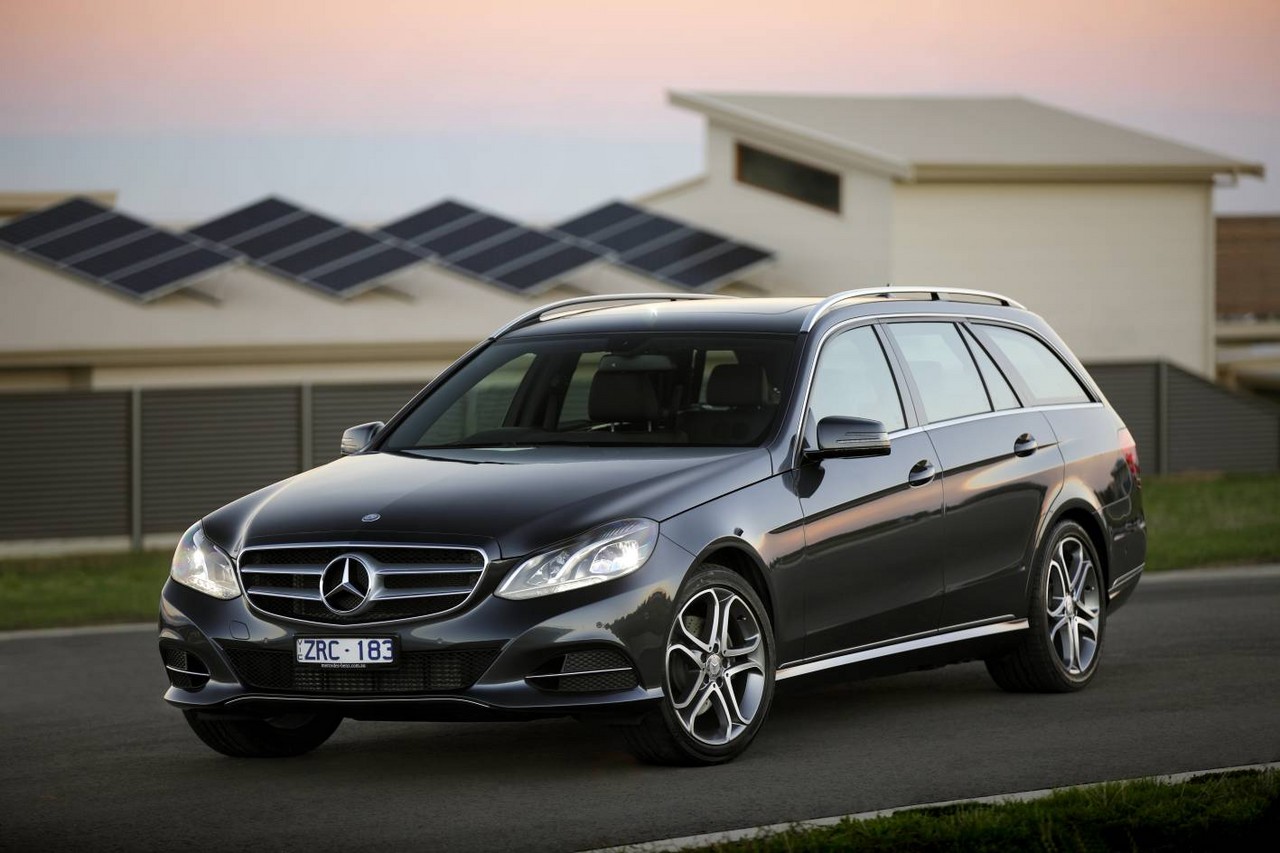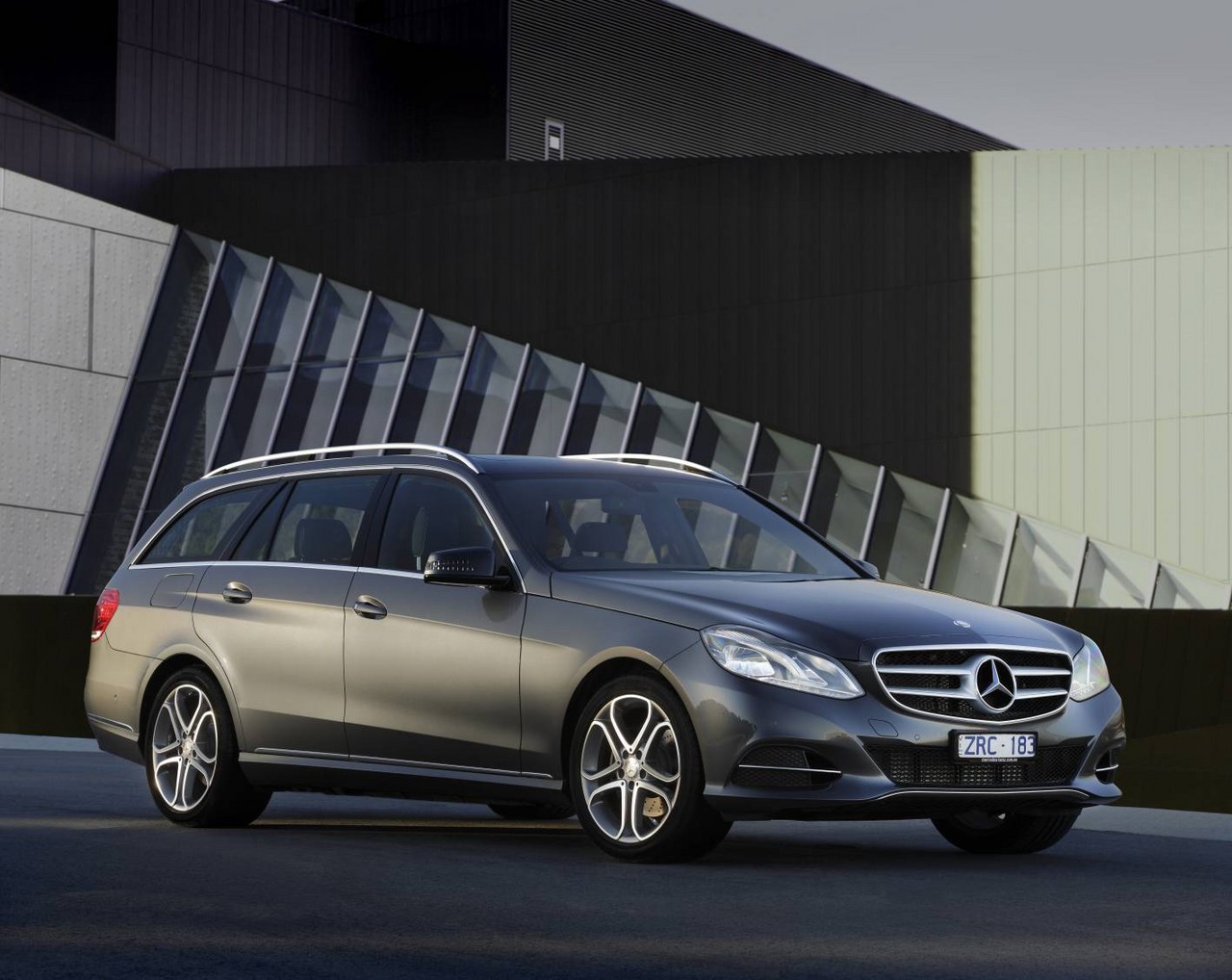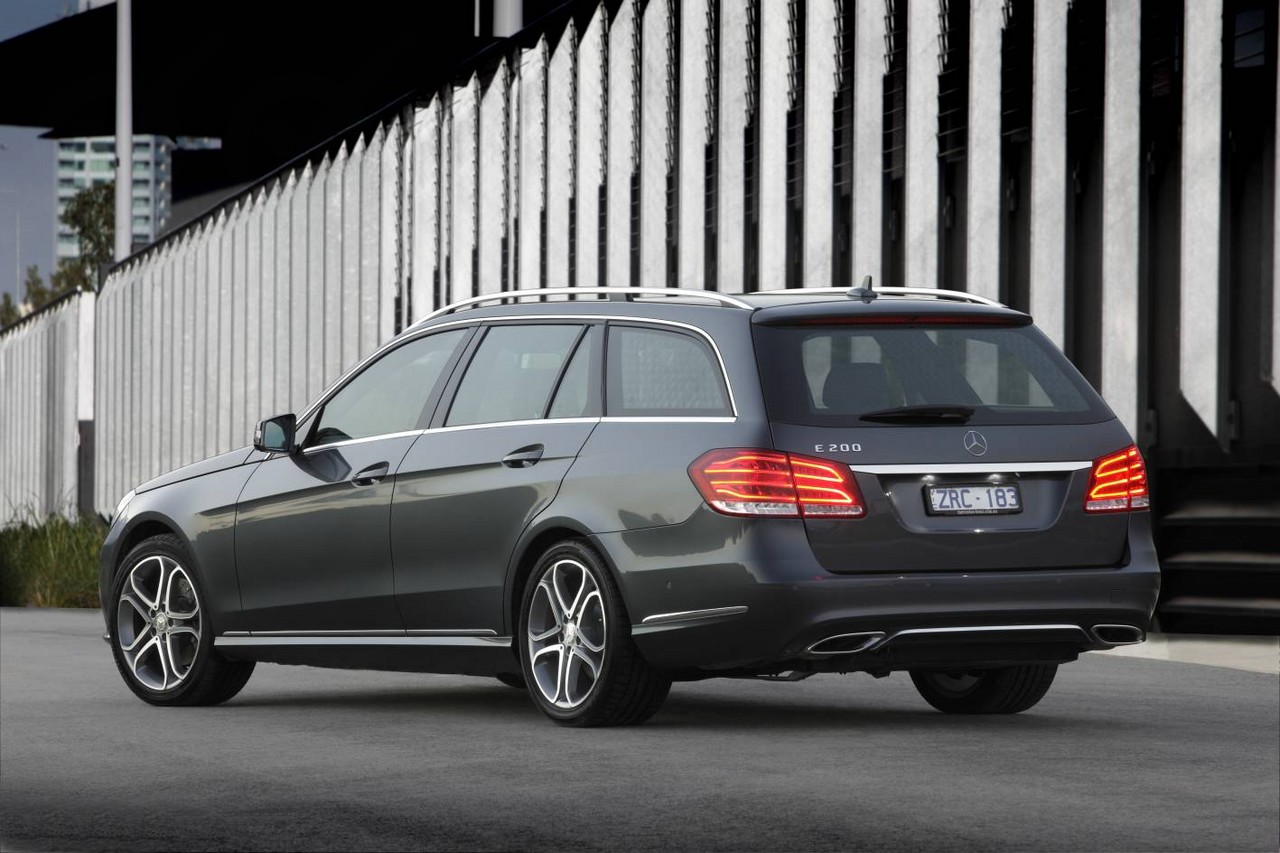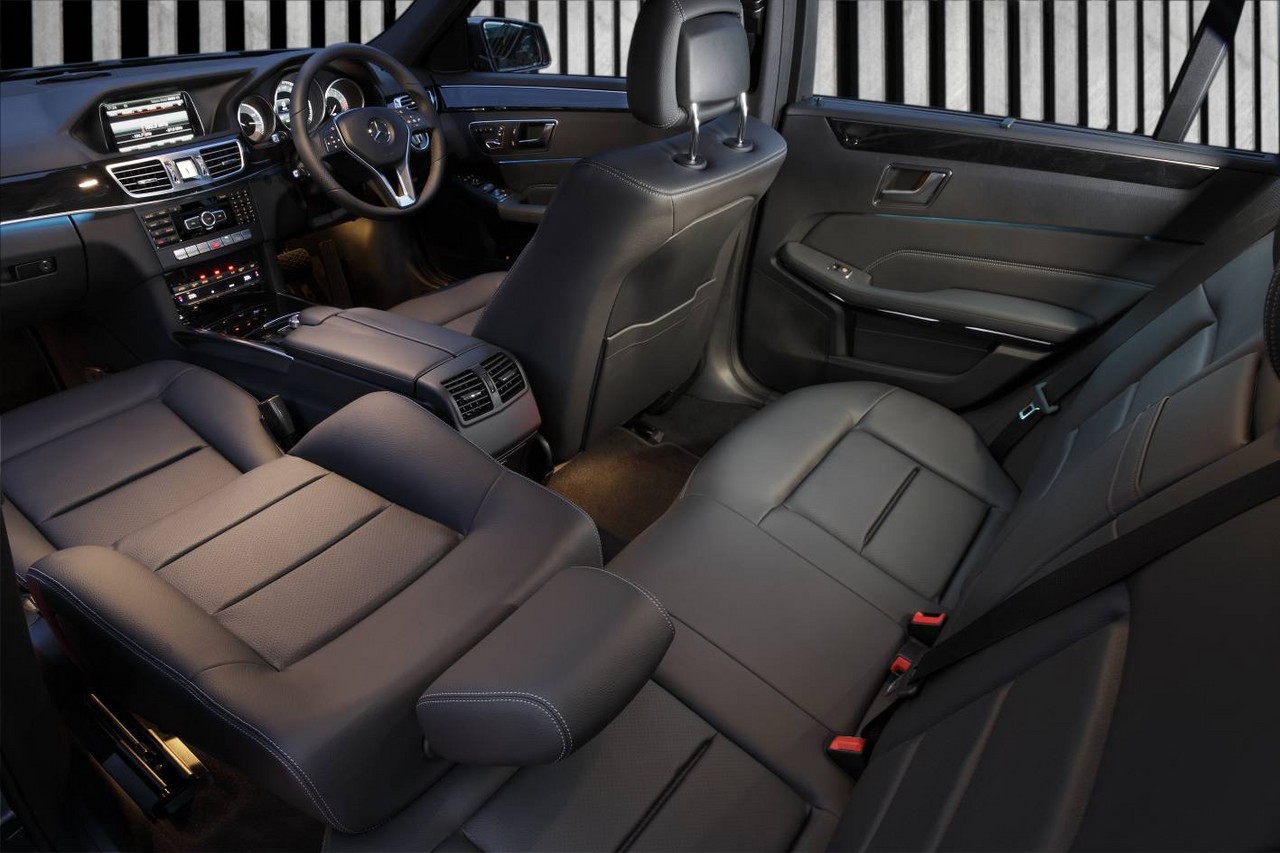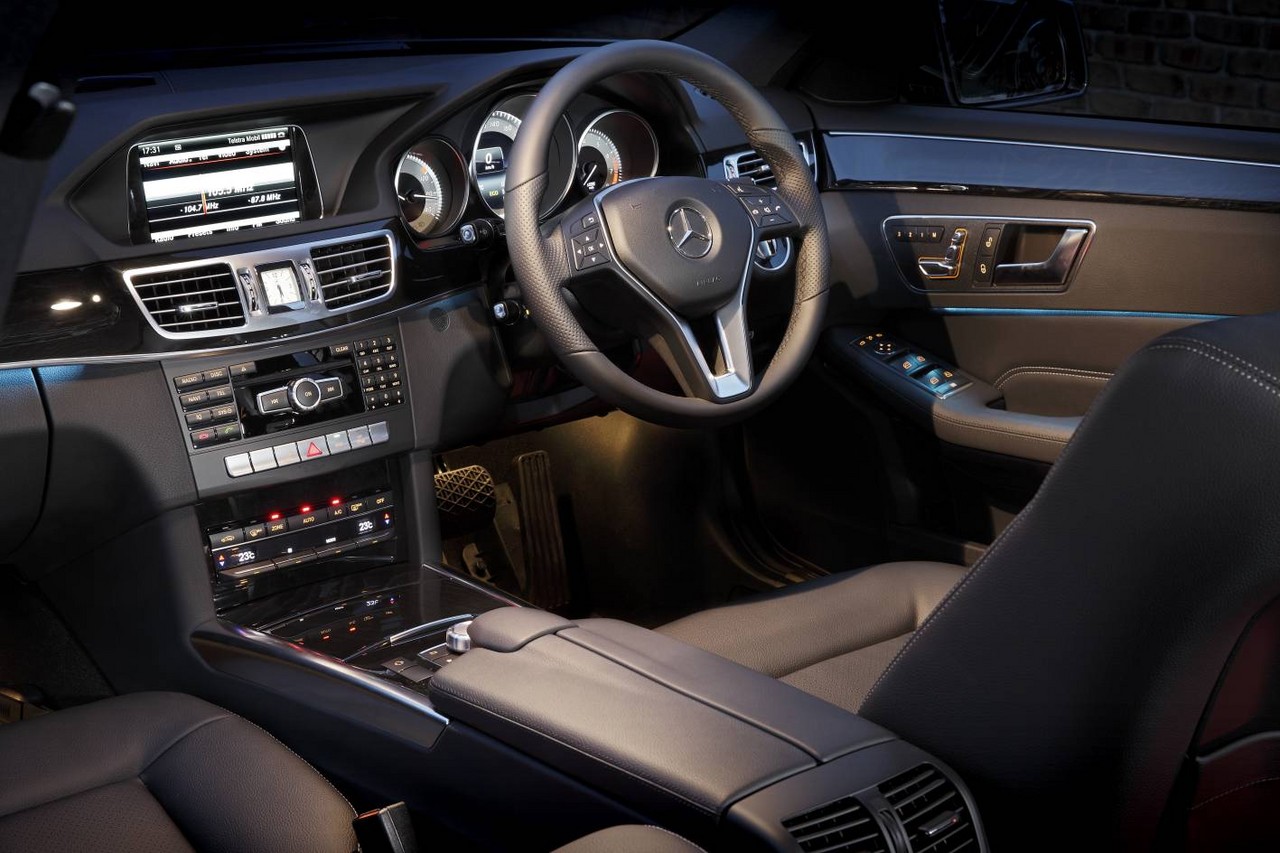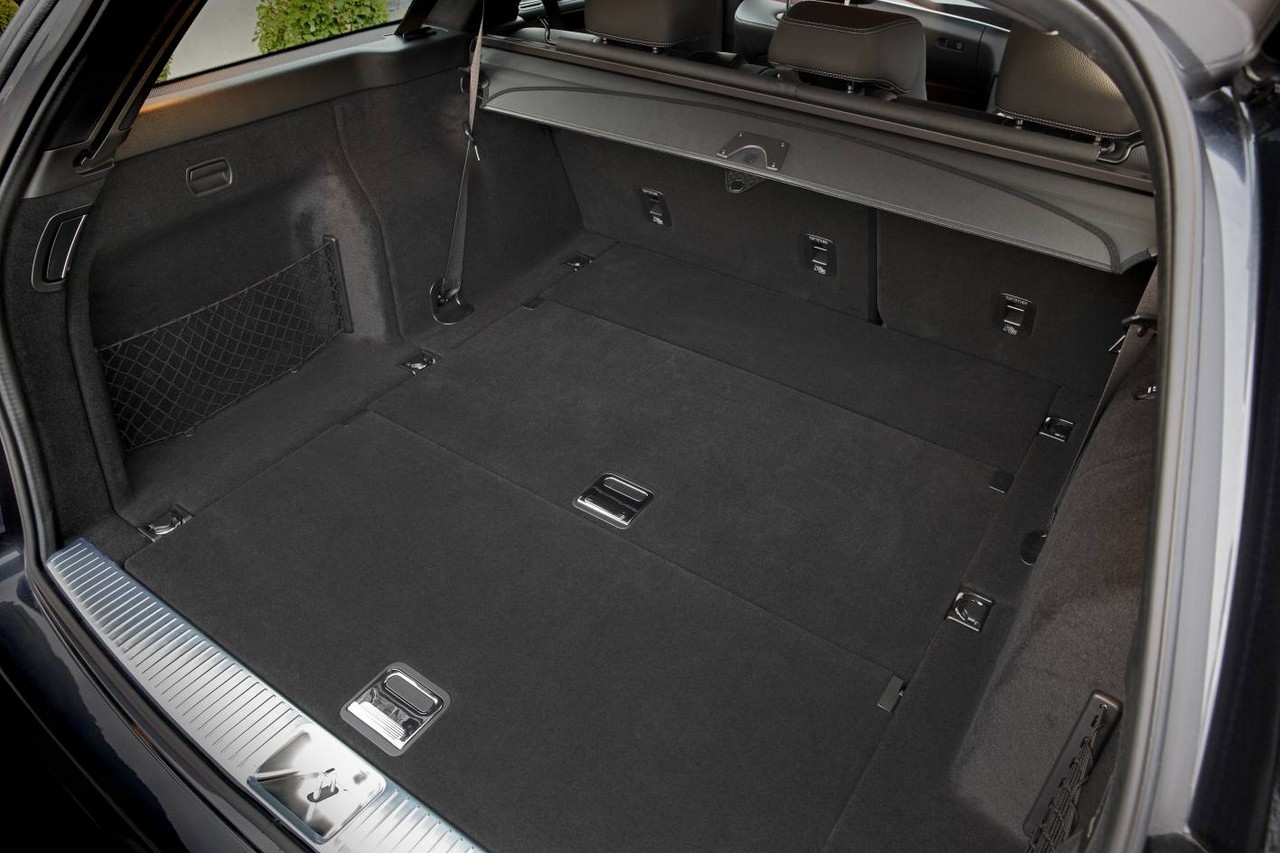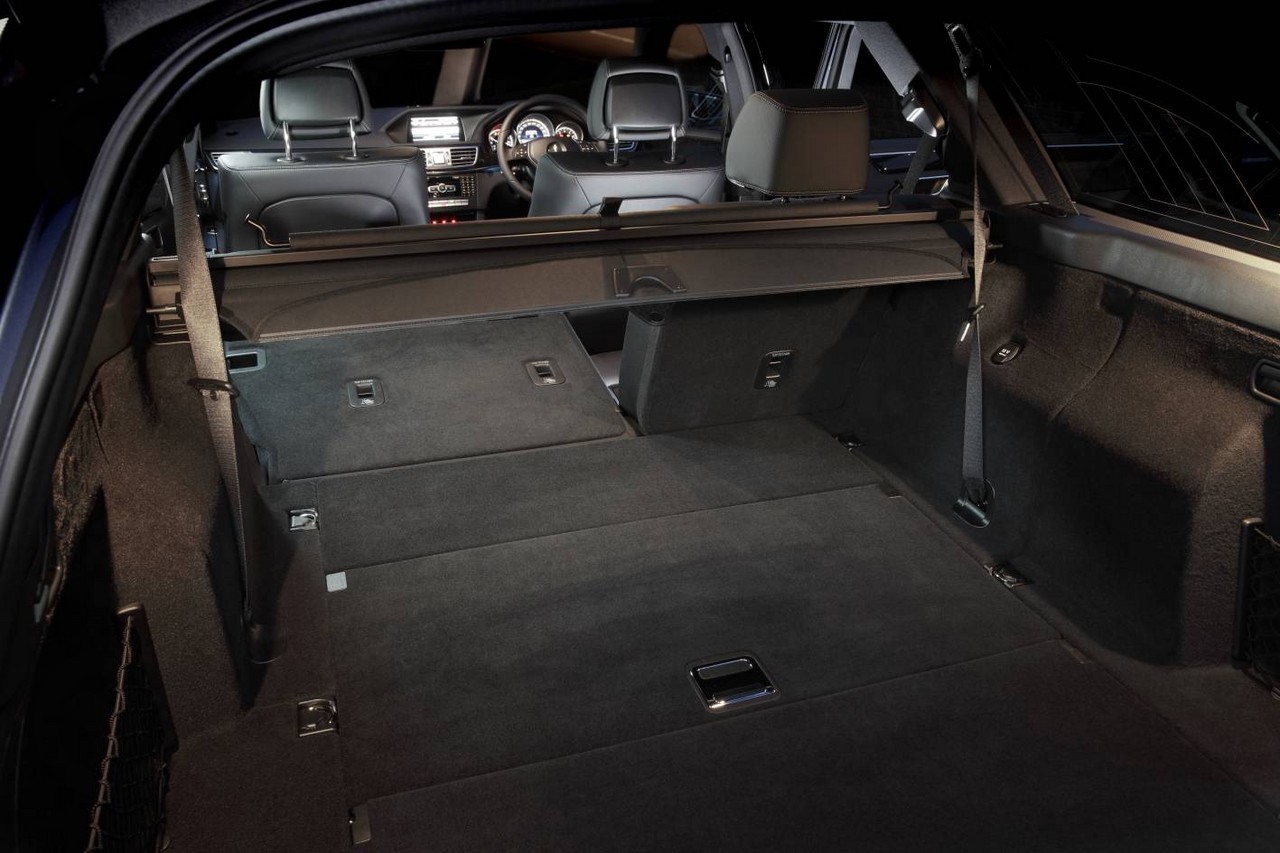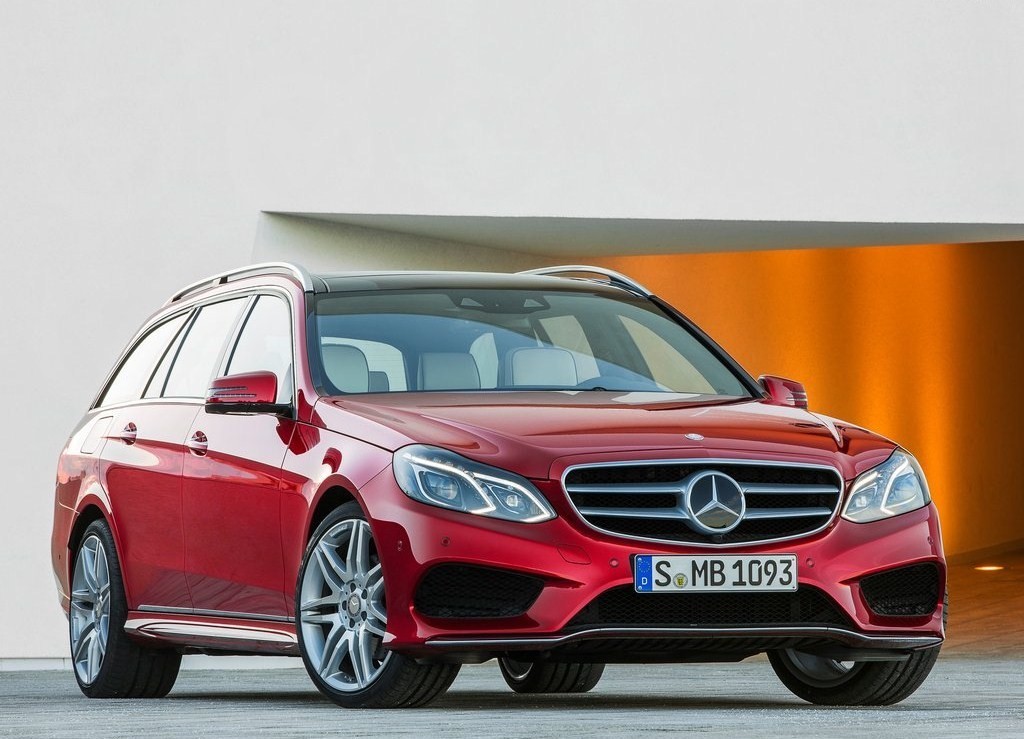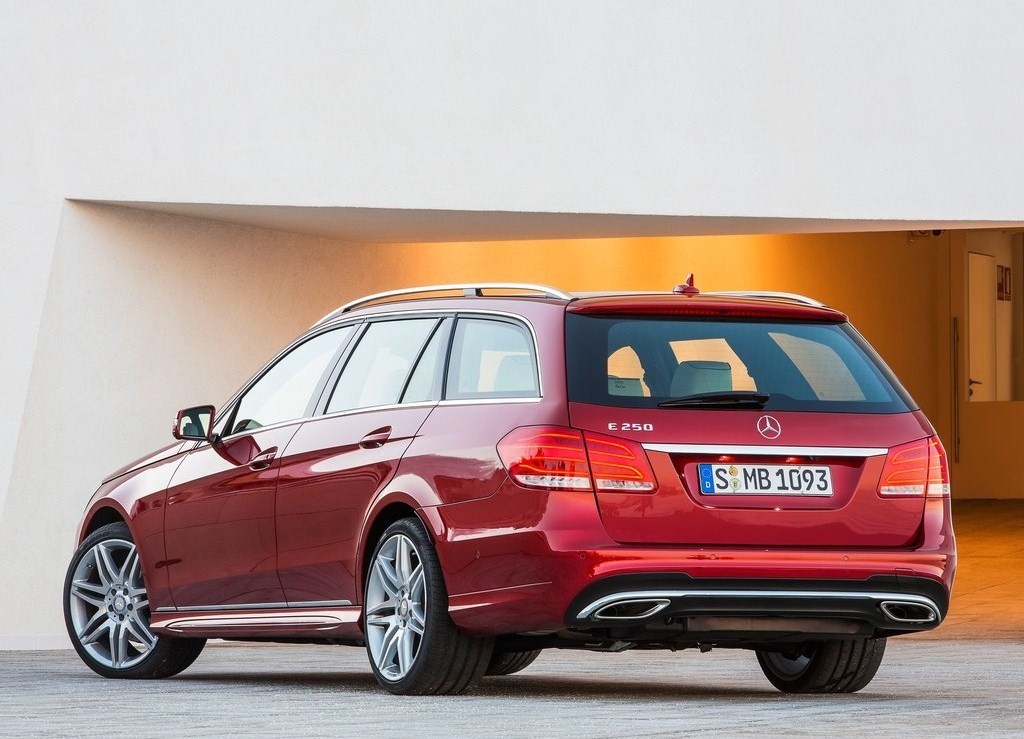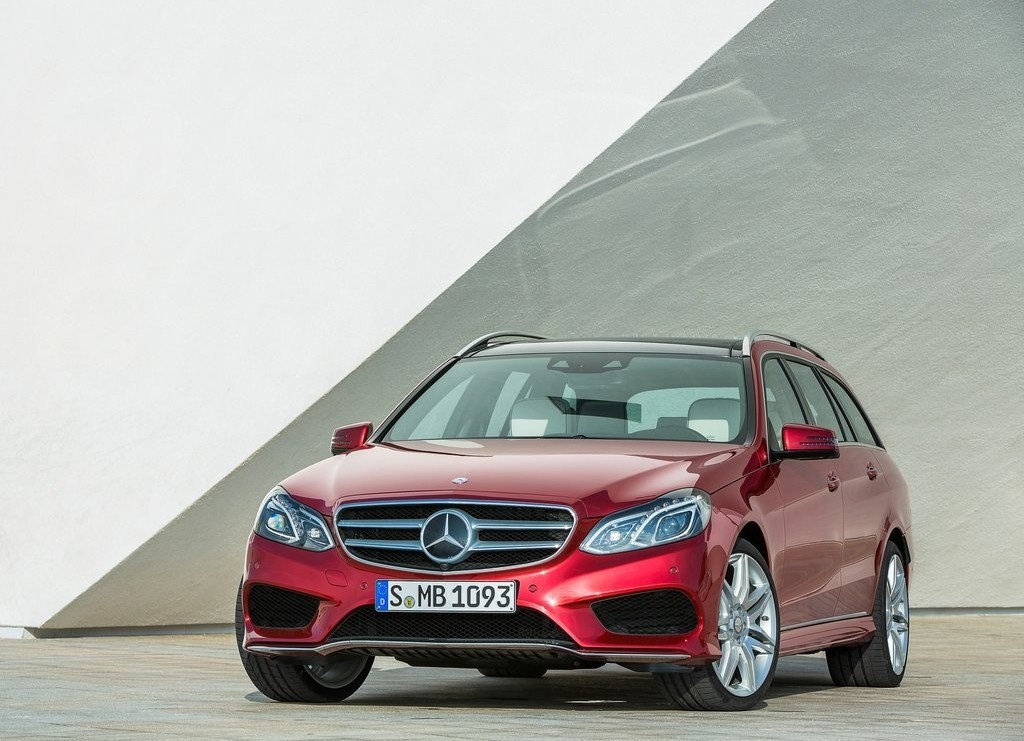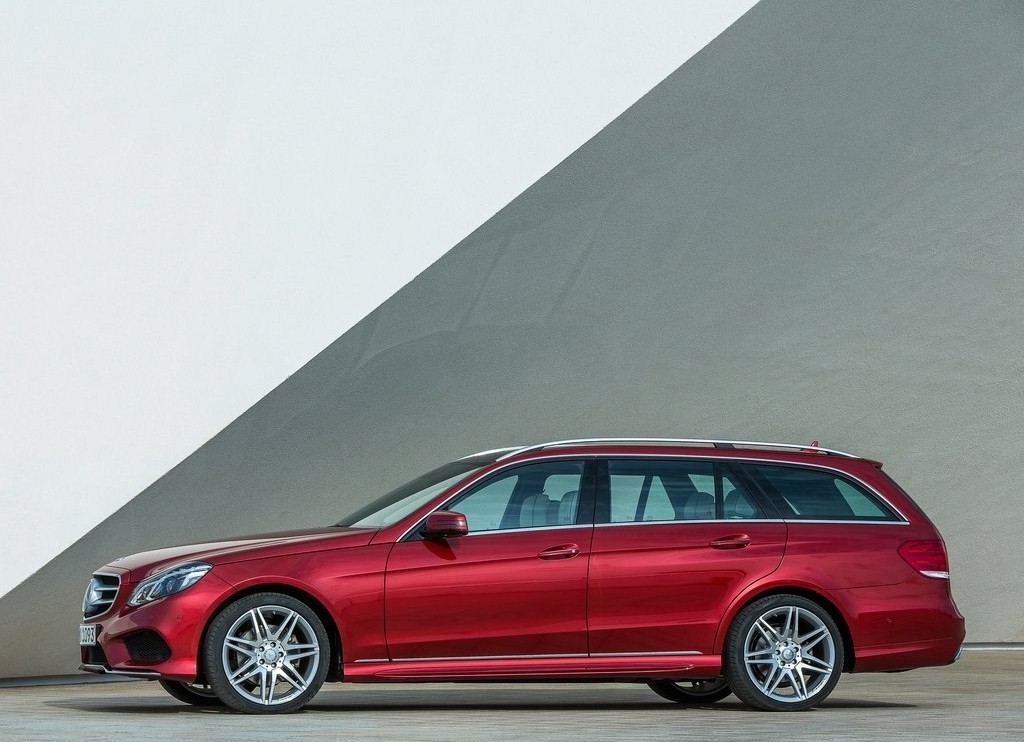
- Willing direct-injection petrol engines
- Fuel-efficient turbo diesel engines
- Impressive ride/handling balance
- Quiet, well-insulated cabin
- High standard of fit and finish
- Steering is precise…
- … but lacks feel
- Four-cylinder diesel engines lack refinement
- Foot-operated park brake
Review: Mercedes-Benz S212.I E-Class Estate (2010-13)
Overview
Released in January 2010, the Mercedes-Benz S212 Series I (S212.I) E-Class Estate was a five-seat, executive wagon. Manufactured in Germany, the S212 E-Class Estate range initially consisted of the E 350, with the E 250 CDI following in September 2010 (see table below). In July 2011, however, the E 250 CDI was fitted with a seven-speed automatic transmission and featured idle-stop, a self-regulating turbo compressor, optimised oil pressure control and engine belt drive; the E 350 was also replaced with the more fuel-efficient and powerful E 350 BlueEfficiency. The full range is given in the table below.
| Variant | Engine | Year | Trans. | Peak power | Peak torque | |
|---|---|---|---|---|---|---|
| E 250 CDI | Avantgarde, Elegance |
2.1-litre twin-turbo diesel I4 (OM651) | 2010-11 | 5sp auto | 150 kW at 4200 rpm | 500 Nm at 1600-1800 rpm |
| 2011-13 | 7sp auto | |||||
| E 350 BE | Avantgarde, Elegance |
3.5-litre petrol V6 (M272) | 2010-11 | 7sp auto | 200 kW at 6400 rpm | 350 Nm at 3000-5100 rpm |
| E 350 | Avantgarde, Elegance |
3.5-litre petrol V6 (M276) | 2011-13 | 7sp auto | 225 kW at 6500 rpm | 370 Nm at 3000-5250 rpm |
Dimensions and body
Compared to the Mercedes-Benz S211 E-Class Estate , the S212 E-Class Estate was 68 mm longer (at 4918 mm), 50 mm wider (1872 mm), 17 mm taller (1512 mm) and had a 20 mm longer wheelbase (2874 mm). Furthermore, the increased use of high-strength steel contributed to a more rigid chassis, while fuel economy was improved due to the introduction of new and upgraded engines, on-demand power steering and fuel pumps, lower rolling resistance tyres and improved aerodynamics (including variable fan louvres which controlled airflow to the engine compartment).
Suspension
Like the W212 E-Class sedan , the S212 E-Class Estate had three-link front suspension with MacPherson struts and multi-link rear suspension. The suspension also included adaptive shock absorbers (Mercedes-Benz’s ‘Direct Control’ suspension) which would automatically adapt to the prevailing driving situation by reducing damping forces when driving normally (for greater ride comfort) and providing maximum damping effect when cornering at speed or during rapid evasive actions. The S212 E-Class Estate, however, also had self-levelling rear suspension.
Safety equipment
Standard safety equipment for the Mercedes-Benz S212 E-Class Estate included dual front airbags, a driver’s knee airbag, front row pelvis airbags, front and rear side airbags, curtain airbags for the front and second row occupants, ABS, electronic brake force distribution, brake assist, electronic stability control, traction control, active front seat head restraints, front and outer rear seatbelts with pre-tensioners and load limiters, driver fatigue monitoring (‘Attention Assist’) and an ‘active’ bonnet which would automatically rise in the event of a collision to cushion a pedestrian’s impact. The E 350 was further equipped with lane departure warning (‘Lane Keeping Assist’) and blind spot monitoring (‘Blind Spot Assist’).
As standard, the Mercedes-Benz E-Class Estate was also fitted with PRE-SAFE, which anticipated and prepared for collisions by tensioning the seatbelts, adjusting the seat positions for optimal airbag deployment and closing the sunroof (if open).
Euro NCAP testing
In Euro NCAP testing , a 2010 Mercedes-Benz W212 E 220 CDI sedan received a five star safety rating which included an 86 per cent adult occupant protection rating and a 77 per child occupant protection rating. In the frontal offset impact test, there was a slight risk of serious chest and leg injury for the front occupants; maximum points were awarded in the side and pole impact tests. Under ANCAP’s methodology, this testing resulted in an adult occupant protection rating of 34.88 out of 37.
Features: Mercedes-Benz S212 E 250 CDI
Standard features for the Mercedes-Benz S212 E 250 CDI included 17-inch alloy wheels, Mercedes-Benz’s COMAND APS (Cockpit Management and Data Auto Pilot System) with a seven-inch colour display, HDD satellite navigation, voice recognition (‘Linguatronic’), a ten speaker sound system, CD/DVD player, 6GB HDD music register, MP3/WMA/AAC compatibility, auxiliary inputs (3.5mm/USB/iPod) and Bluetooth connectivity, dual-zone climate control air conditioning (‘Thermatic’), leather upholstery, power adjustable front seats, directional bi-xenon headlights with washers, LED daytime running lights, cruise control with variable limiter (‘Speedtronic’), rear parking sensors with park guidance display (‘Parktronic’), rain-sensing wipers, automatic headlights, multi-function Nappa leather steering wheel with gearshift paddles, remote central locking, power windows and heated mirrors, a height and reach adjustable steering wheel, power-operated rear sunblinds, roof rails, a cargo cover and net, first aid kit, 12 volt power outlet, trip computer, tyre pressure monitoring and an immobiliser
Inside, the E-Class Estate was fitted with a 1/3:2/3-split second row seats with a ‘quickfold’ system that enabled the seats to be folded down by pulling a cable from the load compartment. The third row of seats could also be folded flat.
Features: Mercedes-Benz S212 E 350
Relative to the E 250 CDI, The E 350 was further equipped with a six-disc CD/DVD player, three-zone climate control air conditioning (‘Thermotronic’), multi-contour front seats with memory settings, UHI (Universal Handy Interface) convenience telephony, reversing camera, power folding mirrors and automatically dimming rear view and door mirrors.
S212 E-Class Estate: Avantgarde and Elegance
The Mercedes-Benz E-Class Estate was available in Avantgarde and Elegance variants. The Avantgarde variants featured sports-oriented suspension, a high gloss black radiator grille with three chrome-tipped louvres, black ash wood interior trim and silver painted analogue dials with white faced dials; E 350 models were also fitted with 18-inch alloy wheels. The Elegance variants, however, had comfort-oriented suspension, a radiator grille with four silver painted louvres and burr walnut wood trim.
Related links
Review: Mercedes-Benz S212.II E-Class Estate (2013-16)
Overview
Released in June 2013, the Mercedes-Benz S212 Series II (S212.II) E-Class Estate range initially consisted of the E 200 and E 250 CDI, with the E 400 following in September 2013. In addition to the revised range, the S212.II E-Class Estate introduced updated styling, an upgraded interior and a range of ‘intelligent drive’ technologies which would be shared with the W222 S-Class . Furthermore, all petrol and diesel engines had an ECO start/stop function which enabled the engine to shut down when the vehicle was stationary in traffic. The S212.II E-Class also introduced a new electromechanical Direct-Steer system which combined the speed-dependent power assistance with variable ratios across the steering angle range.
Visually, the S212.II E-Class Estate could be identified by its new headlights with partial LED lights and a single headlamp lens (full LED headlights were available as an option), redesigned bonnet, new bumpers, a ‘feature line’ which extended from the rear door to the tail light and new tail-lights with horizontally structured LEDs.
Inside, the dashboard had full-width two-part trim and could be specified in a wood or aluminium look, while new elements included a three-tube instrument cluster, a trapezoidal framed display in the head unit and an analogue clock between the two central air vents. The centre console was also redesigned and, for automatic models, omitted a gear lever as the multifunction steering wheel had a ‘Direct Select’ lever and gearshift paddles.
| Engine | Trans. | Peak power | Peak torque | |
|---|---|---|---|---|
| E 200 BlueDirect | 2.0-litre turbo petrol I4 (M274) | 7sp auto | 135 kW at 5500 rpm | 300 Nm at 1200-4000 rpm |
| E 400 BlueDirect | 3.0-litre biturbo petrol V6 (M276) | 7sp auto | 245 kW at 5250-6000 rpm | 480 Nm at 1600-4000 rpm |
| E 250 CDI | 2.1-litre twin-turbo diesel I4 (OM651) | 7sp auto | 150 kW at 3800 rpm | 500 Nm at 1600-1800 rpm |
Safety equipment
Compared to its S212.I predecessor, standard safety equipment for the S212.II E-Class Estate was extended to include:
- Blind Spot Assist: at speeds above 30 km/h, two radar sensors in the rear bumper would monitor the driver’s blind spot and warn the driver against dangerous lane changes; and,
- Collision Prevention Assist (radar-based collision warning with adaptive Brake Assist): operated at speeds between 7 km/h and 250 km/h, and could detect stationary objects when driving at speeds of up to 70 km/h. Collision Prevention Assist monitored the distance to the vehicle ahead, would provide visual and audible warning to the driver if there was a collision risk and would optimise braking power (adaptive Brake Assist) for when the driver depressed the brake pedal. At initial speeds of less than 20 km/h, Collision Prevention Assist could prevent rear-end collisions.
The E 250 CDI and E 400 were further equipped with Mercedes-Benz’s ‘intelligent drive’ assistance systems which utilised a ‘Stereo Multi-Purpose Camera’ positioned in front of the rear-view mirror. The stereo camera had two lenses set at an angle of 45 degrees and with an overall range of 500 metres, providing a three-dimensional view of the area up to 50 metres ahead of the vehicle. For these models, the standard-fit ‘Driving Assistance Package Plus’ included:
- Distronic Plus (adaptive cruise control with brake warning): an ‘adaptive’ cruise control system which used two short-range radar sensors positioned behind the front bumper to monitor the road up to 30 metres ahead, and a long-range radar located behind the radiator grille which had a range of 200 metres. Operating at speeds up to 200 km/h, Distronic Plus used an electronic control unit to analyse the information from both radar systems to calculate the engine, automatic transmission and braking parameters required for proximity control. As such, Distronic Plus could automatically apply the brakes to prevent the vehicle from becoming too close to traffic ahead (the time interval could be specified) and accelerate back to the set speed when traffic allowed. To accelerate from rest, the driver only needed to operate the Distronic stalk on the steering column or briefly depress the accelerator pedal. With Distronic Plus, automatic deceleration of up to four (4) m/s2was possible. If Distronic Plus detected that heavier braking was required, a warning light would illuminate in the instrument cluster and be accompanied by an audible warning. Furthermore, the electronic proximity control system could be activated independently of Distronic Plus at speeds over 30 km/h to alert the driver if they were approaching another vehicle too rapidly;
- Steering Assist: operating in conjunction with Distronic Plus and at speeds up to 130 km/h, Steering Assist used a stereo camera located behind the windscreen to detect road markings. If the vehicle was detected to be drifting out of its lane, Steering Assist would warn the driver and provide steering intervention to keep the vehicle in its lane;
- Pre-Safe Brake (autonomous emergency braking): using two 24 GHz sensors behind the front bumper which had a range of 30 metres and a 77 GHz radar which had a range of 200 metres, Pre-Safe Brake operated at speeds between 30 km/h and 200 km/h, and at speeds below 70 km/h if the vehicle was approaching a stationary queue of traffic. Around 2.6 seconds before the anticipated moment of impact, an audible warning would sound and a red warning would appear in the tachometer. Around 1.6 before the calculated impact, the first stage of Pre-Safe Brake would initiate partial braking autonomously with around 40 per cent of the maximum braking power (approximately four (4) m/s2); the Pre-Safe occupant protections system would also be activated. If the driver then applied the brakes, maximum braking force would be made available. If the driver failed to react, Pre-Safe Brake would – in its second stage – initiate autonomous emergency braking (i.e. maximum braking power) around 0.6 seconds before the unavoidable collision to reduce the severity of the impact;
- Pre-Safe Plus: could anticipate an imminent rear-end collision and warn the vehicle behind by flashing the tail-lights. The Pre-Safe system would then deploy occupant protection measures and apply the vehicle’s brakes to prevent secondary accidents;
- BAS Plus with Cross-Traffic Assist: used a 24 GHz radar sensor with a range of 30 metres and a 77 GHz radar sensor with a range of 200 metres to monitor the distance to the vehicle ahead and would warn the driver if there was a risk of a collision. Brake Assist Plus could detect vehicles when travelling at speeds up to 200 km/h, and stationary objects when the driver was travelling at 7 km/h to 72 km/h. Significantly, Brake Assist Plus could calculate the necessary brake force assistance to prevent a rear-end collision, build up that pressure in the braking system and provide it as soon as the brake pedal was depressed for ‘the best possible deceleration’. The Cross-Traffic Assist function could operate at speeds up to 72 km/h and used the stereo camera and radar sensors to detect traffic that was crossing in front of or behind the vehicle. If detected, the driver would receive visual and audible alerts;
- Active Lane Keeping Assist: could detect when the adjacent lane was occupied (including oncoming traffic) and prevent the driver from inadvertently exiting from the lane when it was not safe to do so by applying a corrective braking force to the wheels on one side of the vehicle; and,
- Active Blind Spot Assistance: active at speeds above 60 km/h, a corrective braking force would be applied to the wheels on one side of the vehicle if the driver attempted to change lanes when a vehicle was detected in the driver’s blind spot.
Features: Mercedes-Benz S212.II E-Class Estate
Standard features for the Mercedes-Benz S212.II E 200 included 18-inch alloy wheels, Mercedes-Benz’s ‘COMAND APS’ (Cockpit Management and Data Auto Pilot System) with a 17.8 cm TFT colour display, CD/DVD player, HDD navigation, 10 GB music storage, auxiliary inputs (USB/SD card), Bluetooth interface for mobile phone connectivity and audio streaming, voice activation (‘Linguatronic’) and internet browser, climate control air conditioning (‘Thermatic’), ‘Artico’ synthetic leather upholstery, power adjustable front seats, cruise control with variable limiter (‘Speedtronic’), a reversing camera, rear parking sensors with park guidance display (‘Parktronic’), automated steering for parallel and reverse parking (‘Active Park Assist’), rain-sensing wipers, a leather-wrapped steering wheel, 1/3 to 2/3 split and folding rear seats, remote central locking, power windows and heated mirrors with folding function, a height and reach adjustable steering wheel, electrochromatic rear view and door mirrors, ambient lighting, a 12 volt power outlet, trip computer and an immobiliser.
Beyond this, the E 250 CDI added 19-inch alloy wheels, leather upholstery, front seat memory settings, full LED headlights with adaptive high beam assist, a proximity key (‘Keyless Go’), a power adjustable steering wheel and remote boot locking.
The range-topping Mercedes-Benz E 400 Estate was distinguished by its Harman Kardon Logic 7 surround sound system, digital radio tuner (DAB+), power-operated glass sunroof and a 360-degree camera which could provide a virtual bird’s eye view of the vehicle while dynamic guide lines could assist with parking manoeuvres.
Brochures
- Brochure: Mercedes-Benz W212.II E-Class Sedan and S212.II E-Class Estate (April 2013)
- Brochure: Mercedes-Benz W212.II E-Class Sedan and S212.II E-Class Estate (October 2013)
Related links
- Specifications: Mercedes-Benz S212.II E-Class Estate (March 2014)
- Specifications: Mercedes-Benz S212.II E-Class Estate (September 2014)
- Mercedes-Benz Australia: Mercedes-Benz E-Class Estate
- Wikipedia.org: Mercedes-Benz W212 E-Class
